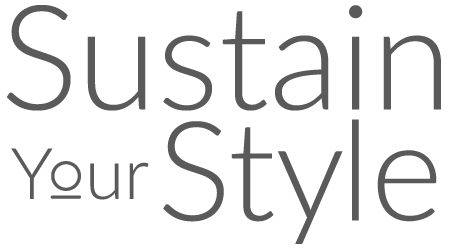SHOP, LIVE AND SLEEP SUSTAINABLY: WORLD EARTH DAY
April is the month of World Earth Day and it has never been more important for textile companies and consumers to reflect on the impact our clothes has on the environment. We have more clothes than ever right now, on average 5 times more than our grandparents, yet we know that 20-40% of the garments in our wardrobes are never used. Wearing a garment only 5 times instead of 50 times mean that 400% more carbon emissions are created. Fashion is a significant contributor to global waste and pollution but there are actions we can take to shop and live more sustainably.
THE FASHION CHALLENGES AND THE SUSTAINABLE SOLUTIONS
So what are the major issues in fashion today and what is Dagsmejan doing about it?
1. WASTE: HOW CLOTHES END UP UNUSED IN THE LANDFILL
The challenge: Fast fashion and the dropping price of textiles has led to a huge spike in textile demand and production. The average consumer buys 60% more clothing than they did 15 years ago, only wear garments on average 7 times but still 30% is never sold and go straight to a landfill. 17 million tons of clothing was sent to landfills in the US in 2018 alone. 72% of clothes use synthetic fibres which can take up to 200 years to decompose.
The Dagsmejan solution: At Dagsmejan we have adopted a “slow fashion” design philosophy – we focus on both contemporary and timeless designs which create joy for our customers over many seasons and also allow us to carry over products we have produced to many of to the coming season. Furthermore, we are committed to use natural fibers such as merino wool or botanic fibers that only take 6 months to biodegrade as well as recyclable and biodegradable packaging material. And at Dagsmejan we take great pride in every garment we produce and hence we will NEVER put a returned garment to landfill as many low price brands unfortunately do. All returned products are carefully examined, refreshed, repacked and restocked.
2. WASTE: FABRIC LOST ALREADY IN THE PRODUCTION
The challenge: Fabric is produced on rolls and cut into pieces to sow together in a garment. With the right lay plan you can increase the yield of the fabric and reduce the waste but still 15% of the fabric intended for clothing ends up on the cutting room floor.
The Dagsmejan solution: Apart from constantly working on the lay plan to reduce cutting waste we also use fabric left over when cutting a t-shirt for example to produce smaller items, thereby reducing waste. Working together with Lernwerk, a work reintegration organization helping people to re-enter the job market, this fabric is used to create sleep accessories.
3. WATER CONSUMPTION: WASTING WATER
The challenge: The fashion industry uses 1.5 trillion liters of water every year. 2.6% of the global fresh water is used for growing and producing cotton. At the same time millions of people across the world don’t have access to fresh water. The Dagsmejan solution: Dagsmejan uses fibres that are resource efficient including botanic fibres that require up to 20x less water than cotton. The fibres are produced in a closed loop system where 99% of the process water is recycled and used multiple times. These botanic fibres are exceptionally sustainable, one more reason why this is our preferred option and why we never use cotton.
4. CHEMICALS: TOXIC ENVIRONMENTS
The challenge: Garment production is chemical intense, this doesn’t have to be bad but use of toxic chemicals can create problems both for the workers involved in the manufacturing process as well as our environment. 23% of the chemicals produced world-wide are used in the production of apparel.
The Dagsmejan solution: all of our production processes are Oekotex certified and whenever possible we use eco-yarns that are bleached with oxygen instead of chemicals. Several yarns used are also Bluesign certified, verifying that the highest attention is given to sustainable production practices and ensuring worker welfare.
5. GREENHOUSE GASES EMISSIONS OF THE FASHION INDUSTRY
The challenge: Energy used in the production of clothes are generating a lot of green gas emissions. In particular synthetic fibres are energy intensive and production in some low cost countries like China, Bangladesh and India are often coal fueled which is the dirtiest form of energy in terms of carbon emission. The clothing industry represents 10% of global carbon emissions and 70 million oil barrels are used every year to produce polyester.
The Dagsmejan solution: Dagsmejan use the finest, natural fibres and the production takes place entirely in Europe. Each step of the way actions are taken to reduce energy consumption from using carbon neutral natural fibres, dyeing methods that require less heat and thereby less energy and using renewable energy.
6. RAIN FOREST DESTRUCTION: REMOVING NATURAL HABITATS
The challenge: Though cellulosic/ botanic fibres have many advantages compared to cotton and synthetic fibres when it comes to sustainability if not done right there is a real negative side to it. 70 million trees are cut down every year to make clothes and when this is happening in rainforest areas the local eco systems come under threat.
The Dagsmejan solution: Wood and pulp used by Dagsmejan comes from natural forests and sustainably managed plantations. All fibers are certified with FSC® or PEFC™ . Dagsmejan uses fibres from Lenzing, one of the most sustainable and ethical producers of any fibres worldwide. Dagsmejan also works together with Eden reforestation projects, a 501c3 NGO that focuses on fair employment and reforestation.
7. WORKING CONDITIONS
The challenge: The growth of fast fashion and the expectation of ever dropping prices for garments have lead many brands to produce in low cost countries in Asia like Bangladesh, China and India. Unfortunately there the working conditions are at times very poor. The minimum salary levels only representing 20-50% of the living wage required, workers are expected to work 7 days a week up to 14-16 hours a day with poor health and safety conditions.
The Dagsmejan solution: 100% of the textile production from the spinning of the yarn, to knitting and deying to garment making takes place in Europe and all our production partners are OEKO-tex certified. Dagsmejan sleepwear is handmade by experienced garment makers. Production is carried out according to the standards issued by the BSCI (Business Social Compliance Initiative) ensuring that all workers have fair working conditions.
SLEEP BETTER IN A TOTALLY NATURAL AND SUSTAINABLE WAY
HTTPS://DAGSMEJAN.COM/BLOGS/SLEEP/CLOTHING-SUSTAINABILITY-WORLD-EARTH-DAY
At Dagsmejan they believe in a world well rested.




